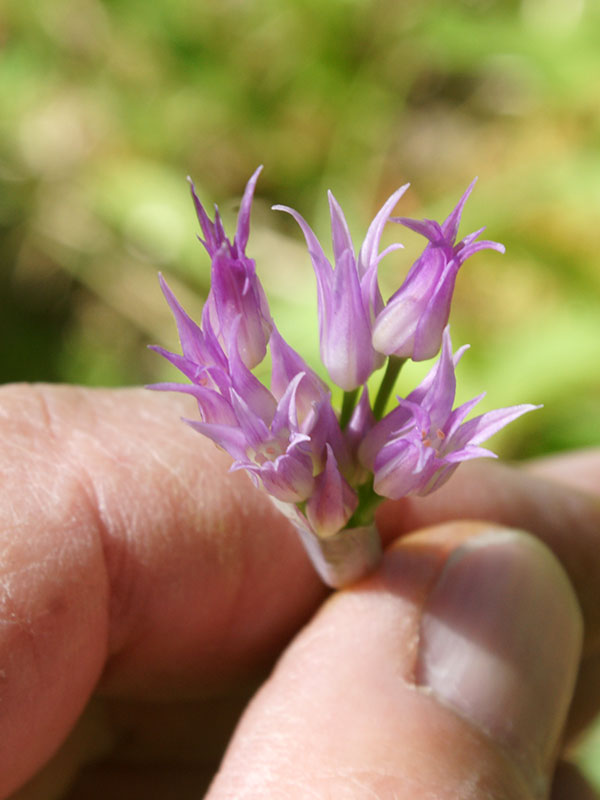Allium geyeri / Geyer’s onion
- smells like onions
- magenta (occasionally white) flowers on ca. 15 inch stem
- each flower urn-shaped with flared, pointy tips; yellow anthers
- leaves persistent during flowering
- rocky slopes in brush and pines, sometimes in dense stands
Synonyms: Allium dictyotum, A. funiculosum, A. pikeanum, A. fibrosum, A. arenicola, A. rubrum, A. sabulicola, A. rydbergii
See also: Allium brevistylum / short-styled onion
Allium geyeri is a wild onion found in dry forests and understoreys. It is also often on rocky slopes among brush and pines. In some places, it can form dense stands which are a sight because of its bright magenta flowers.
The inflorescence of Allium geyeri is on a single stem, or scape, up to about 14 inches tall, several inches taller than the 2 or 3 narrow basal leaves. At the top of the scape is a umbel of as many as 40 flowers. These are pink to purple, i.e. magenta (although occasionally white), and have yellow anthers. The flowers are urn-shaped with six, pointed tepals, each of which is curved at the base and pointed at the tip. The overall effect is an appearance of being flared strongly outwards. As shown in the gallery, at the base of the umbel there may be two or three thin papery bracts. As the inflorescence opens more widely, these wither away.
In some individuals, the flowers may be replaced instead by bulblets. These are brown, knobly sorts of very small onions but located in the inflorescence. They are an alternate method of reproduction to seeds and bulbs.
The leaves of Geyer’s onion are linear and cylindric and are retained even during flowering. This characteristic distinguishes Geyer’s onion from other species such as Allium acuminatum (tapertip onion) that may also be found in the area. In that species, the leaves wither and disappear before flowering.
Geyer’s onion bulbs are spherical, rather small and less than 3/4 inch across. The bulb, stem and flowers are all edible. They smell and taste like onions.
| Color | |
|---|---|
| Family | |
| Blossom size | |
| Inflorescence size | |
| Inflorescence type | |
| When? | |
| Where? |


